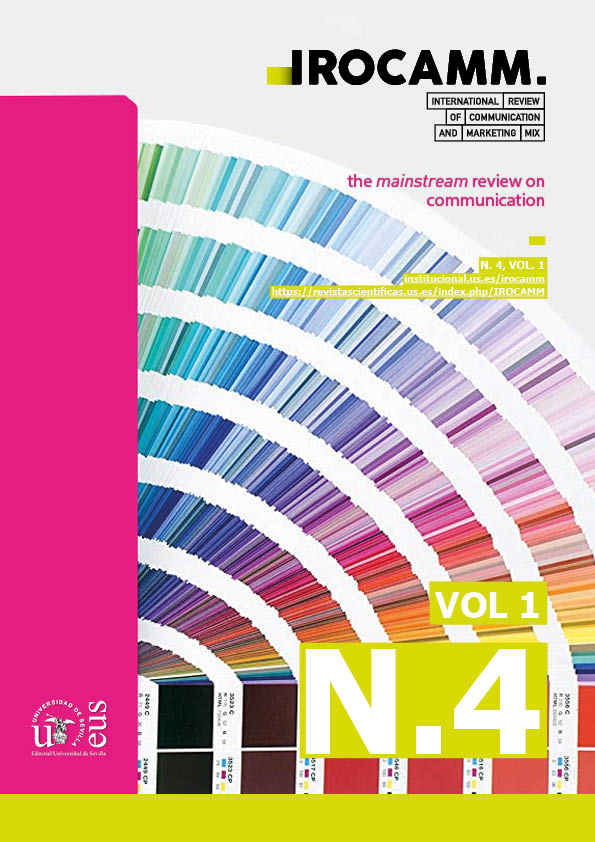Abstract
The aim of this paper is to check how Visual Merchandising should be integrated into the strategic communication plan. We also seek to enhance the role of architecture within the overall profitability and communication plan for an event, emphasising the benefits obtained when we put the consumer experience at the centre of architectural design. This is clearly shown when we observe a path that is designed in such a way that it stimulates all human senses, thus generating certain emotions that will modify the perception of the identity of a corporation or an event. We propose, therefore, to project ourselves into the future and investigate new concepts and trends (digital and new technologies) that will be applied in the field of visual merchandising and that will have an impact on corporate or other types of events. And we position visual merchandising as a reflection of the constant evolution of new technologies. Therefore, visual merchandising is constantly reinventing itself in relation to the new emerging codes, thus facilitating communication between generations.
References
Altamirano Rodríguez, M. J. & Castro Analuiza, J. C. (2020). El merchandising visual como elemento estratégico en el punto de venta. Digital Publisher, 5(6), 35-52.
Baker, J. & Bailey, S. (2014). Visual Merchandising for fashion. Londron: Bloomsbury Visual Arts.
Bellido-Pérez, E. (2019). Art at the point of sale: Its communicative potential and four different possibilities of application. International Review Of Communication And Marketing Mix, 2(1), 25-41. http://dx.doi.org/10.12795/IROCAMM.2019.v02.i01.03
Betsky, A. (2017). The triple O play. Architect, 18, 25-44.
Bloomer, K; Moore, Ch. (1982). Cuerpo, memoria y arquitectura. Madrid: Hermann Blume.
Costa, J. (2003). Creación de la imagen corporativa. El paradigma del siglo XXI. Razón y palabra, 34, 26-38.
Díaz Rada, A. y Velasco Maíllo, H. (1996). La cultura como objeto. Signos. Teoría y practica de la educación, 17, 6-12.
Eco, U. (2005). Tratado de semiótica general. México: DeBolsillo.
Frondizi, R. (1986). ¿Qué son los valores? Introducción a la axiología. México: Breviarios del Fondo de Cultura Económica.
González-Oñate, C.; Farràn Teixidó, E. & Vázquez Cagiao, P. (2018). Rational vs. emotional communication models. Definition parameters of advertising discourses. IROCAMM - International Review Of Communication And Marketin Mix, 1, 88-104. 10.12795/IROCAMM.2018.i1.06
https://www.youtube.com/watch?v=raZDFMBUWPw
https://www.youtube.com/watch?v=UhB_E-Ela5M&t=1367s
Jiménez-Marín, G. & Elías Zambrano, R. (2018). Marketing sensorial: merchandising a través de las emociones en el punto de venta. Análisis de un caso. adComunica, 15, 235-253. http://dx.doi.org/10.6035/2174-0992.2018.15.12
Jiménez-Marín, G. (2017). Gestión profesional del merchandising. Barcelona: UOC.
Morales Valiente, C. (2017). La creatividad, una revisión científica. Revista científica de arquitectura y urbanismo, 38(2), 1-10.
Morgan, T. (2015). Visual merchandising. Barcelona: GG.
Muntañola, J. (1990). Retórica y arquitectura. Madrid: Hermann Blume.
Palomares, R. (2011). Merchandising: teoría, práctica y estrategia. Madrid: Esic.
Pedroni, M. y Pérez-Curiel, C. (2019). Investigación en moda: cambio, comunicación e industria. Prisma social, 24, 1-8.
Ramírez, C. & Alférez, L. (2014). Modelo conceptual para determinar el impacto del merchandising visual en la toma de decisiones de compra en el punto de venta. Pensamiento y Gestión, 36, 1-27.
Román-San-Miguel, A. (2009). El merchandising como herramienta estratégica de comunicación: el caso de la Universidad de Sevilla. Actas del I Congreso Internacional Brand Trends, 1-14.
Scheler, M. (2001). ÉTICA Nuevo ensayo de fundamentación de un personalismo ético. Madrid: Caparrós.
Villagrán, J. C. (1992). Integración del valor arquitectónico. México: CYAD.
Vitrubio Polion, M. L. (2000). Los Diez Libros de Arquitectura. Barcelona: Linkgua.
Weaver, J. (2019, 29 de marzo).What is storytelling in design? UX Colletive. https://uxdesign.cc/what-is-storytelling-in-design-fe3a6e94cc46

This work is licensed under a Creative Commons Attribution-NonCommercial-ShareAlike 4.0 International License.
Copyright (c) 2020 IROCAMM - International Review Of Communication And Marketing Mix

